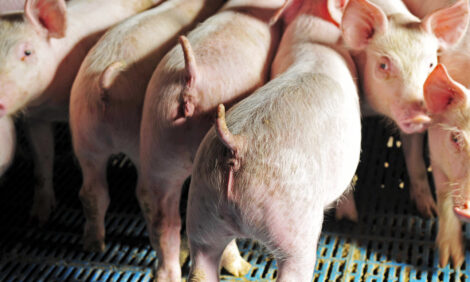



European Pig Producers Did Better Last Year
EU - European Union farm incomes rose 3.7 per cent last year, according to a new analysis by the European Commission agriculture department.In the pig sector, high prices until the end of 2011, coupled with a fall in cereal prices, have brought back theoretical producer margins to the five-year average, according to the report, which can be viewed here.
The pig meat sector continued to concentrate in fewer hands and the European sow herd reduced 'slightly', according to the Brussels agriculture department.
According to December-December census data, the European sow herd fell nearly five per cent, so some commentators might question Brussels' use of the description 'slightly'.
The new analysis notes that the increasing trend in production continued in 2011, with the total production up 1.7 per cent.
It says that as regards exports, 2011 was an exceptional year as for the first time in its history, the European Union exported more than 3 billion tonnes of pigmeat, an increase of over 20 per cent against 2010 and representing nearly 12 per cent of the domestic production.
Hong Kong and China became the first export destination (30 per cent of European Union pig meat exports), followed by Russia (27 per cent).
Pig meat imports into the European Union further decreased to 36,000 tonnes, 13 per cent down compared to 2010. Switzerland remained the main origin accounting for almost half of all European Union imports.
Pig meat consumption is estimated to have remained stable last year.
The 2011 European Union average carcass price at 153.2 euros/100kg ( 3126/100kg) was 13 euros/100kg ( 310.70/100kg) more than the year before.
Aid for private storage was introduced for a period of three weeks in February 2011 to stabilise the market after the dioxin incident in Germany.
The Brussels annual report finds that average European Union farm income across all sectors rose in 2011 for the second year running – after 10 per cent growth in 2010 followed a drop in 2009 – driven by high food prices and a slight fall in labour.
But the rise was tempered by a surge in input prices, with the cost of feedstuffs up 16.9 per cent, fertilisers up 14.7 per cent and energy up 11 per cent.
Prices rose for the majority of crops, particularly for cereals (+18.3 per cent) but also for oilseeds (+15.1 per cent) and protein crops (+11.6 per cent).
Other price hikes were recorded for milk (+9.2 per cent), poultry (+8.5 per cent) and cattle (+8 per cent).






